Abstract
Microbial Fe reduction in acetate- and succinate-containing enrichment cultures initiated with an estuarine sediment inoculum was studied. Fe reduction was unaffected when SO42− reduction was inhibited by MoO42−, indicating that both processes could occur independently. Bacterially produced sulfide precipitated as FeS but was not completely responsible for Fe reduction. The separation of oxidized Fe particles from bacteria by dialysis tubing demonstrated that direct bacterial contact was necessary for Fe reduction. Fe reduction in cultures amended with NO3− was delayed until NO3− and NO2− were removed. However, bacterial attachment to oxidized Fe particles in NO3−-amended cultures occurred early during growth in a manner similar to NO3−-free cultures. During late stages of growth, bacteria not attached to Fe particles became pale and swollen, while attached cells remained bright blue when examined by 4′,6-diamidine-2-phenylindole epifluo-rescence microscopy. The presence of added oxidized Mn had no effect on Fe reduction. The results suggested that enzymatic Fe reduction was responsible for reducing Fe in these cultures even in the presence of sulfide and that cells incapable of Fe reduction became unhealthy when Fe(III) was the only available electron acceptor.
Full text
PDF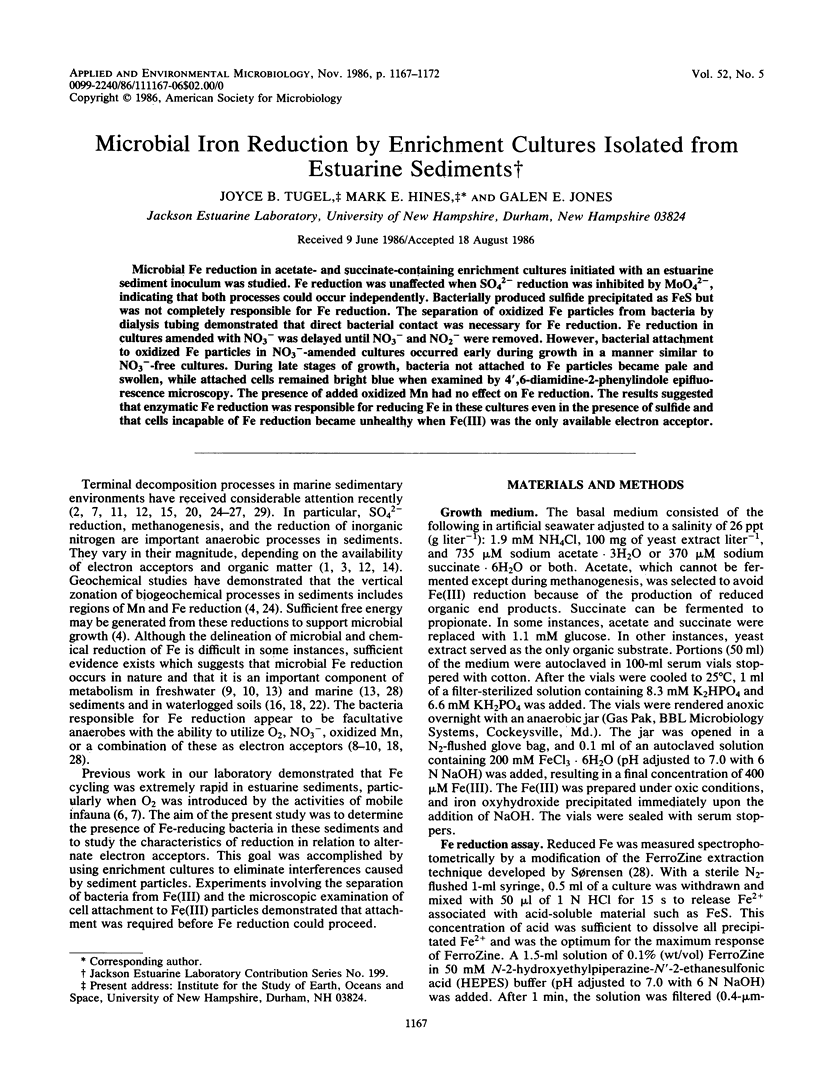
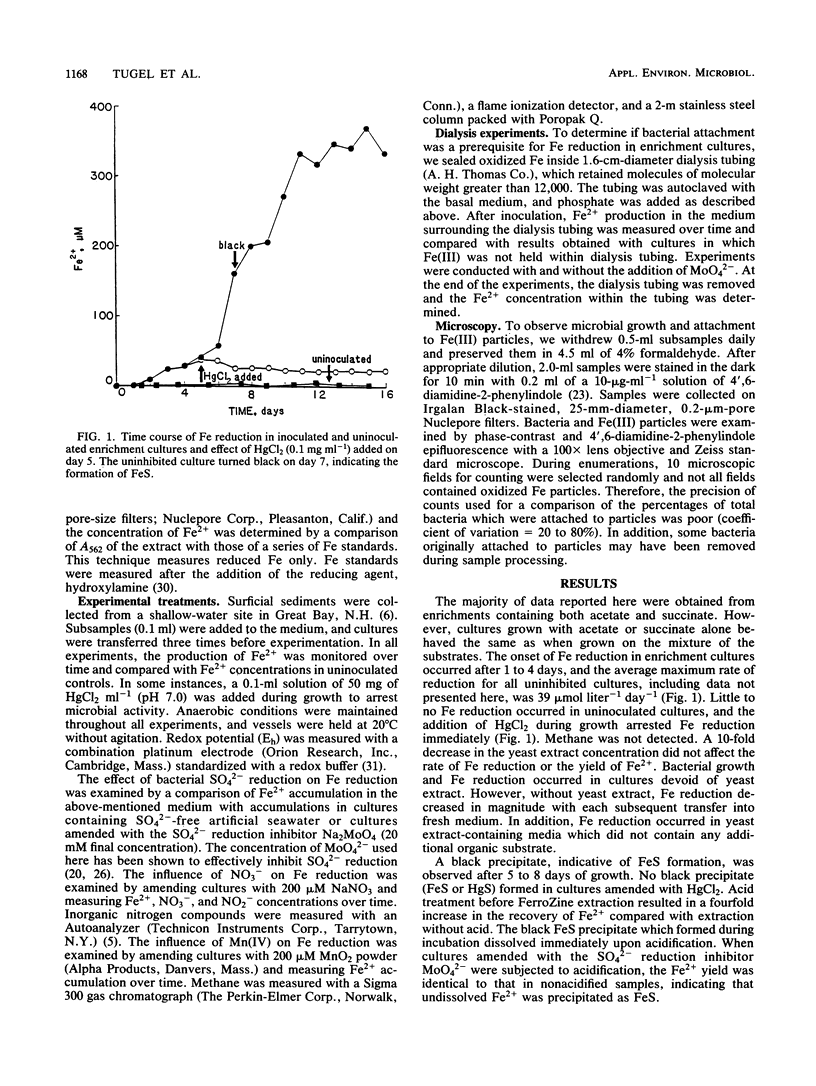
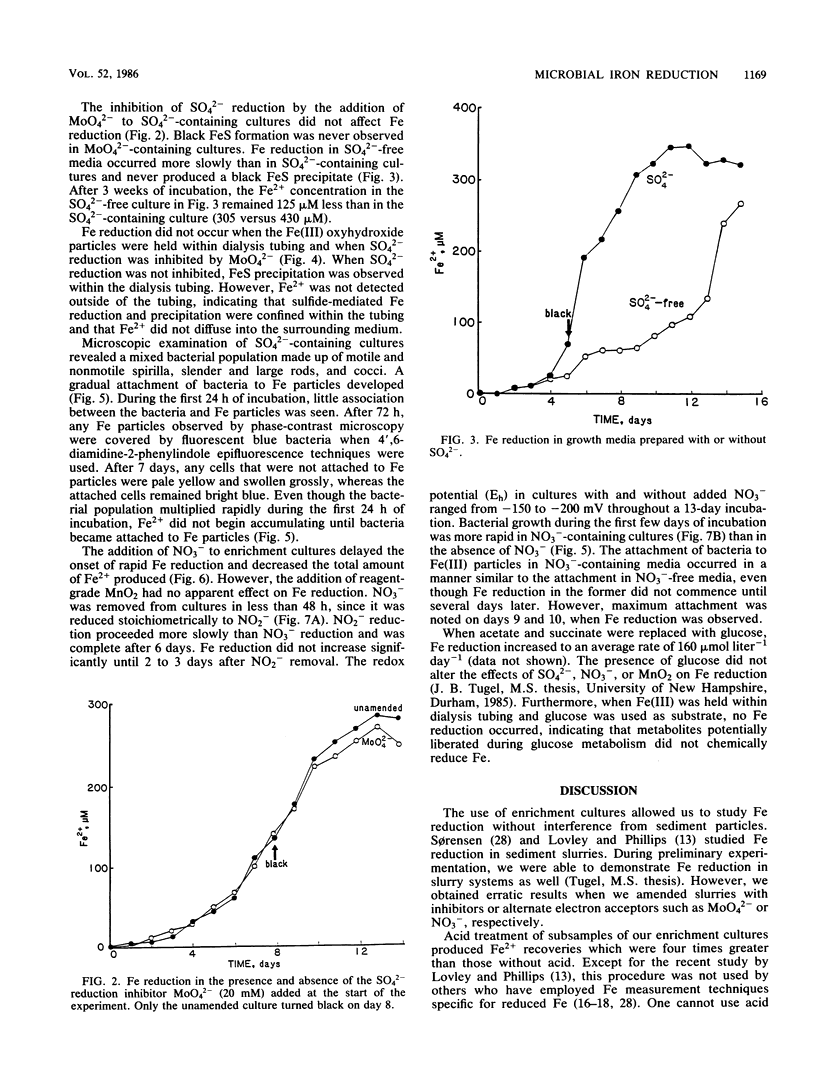
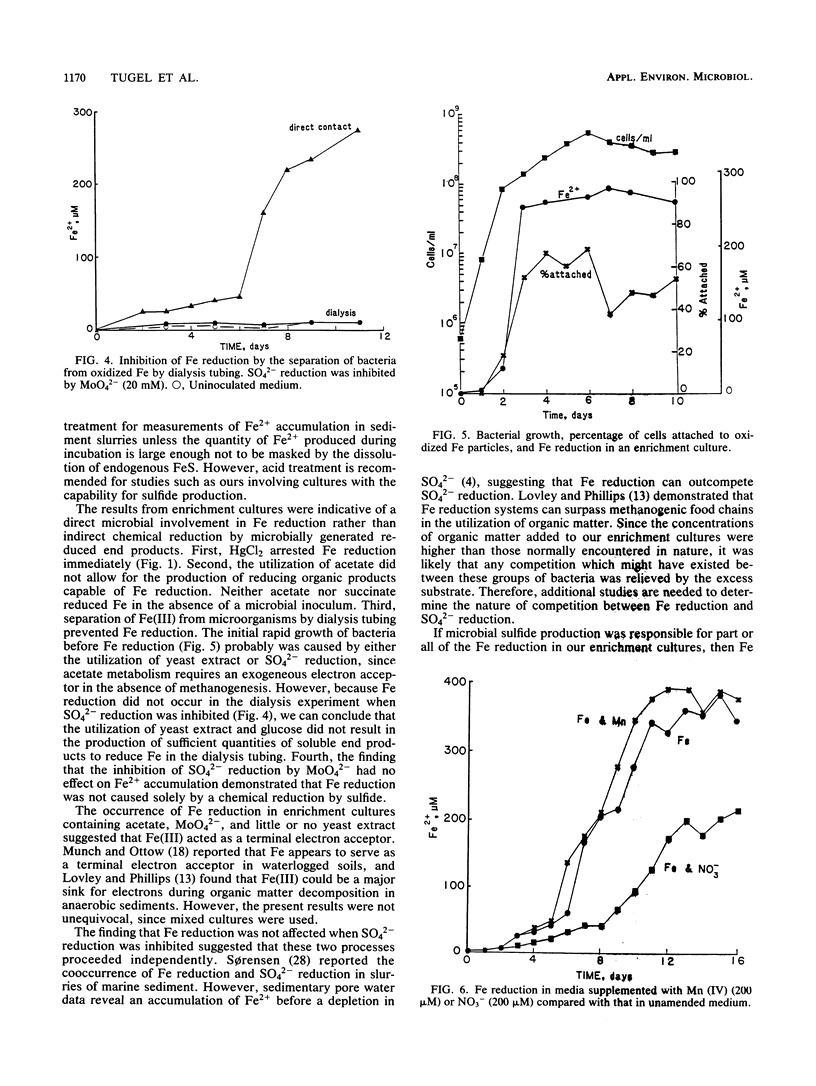
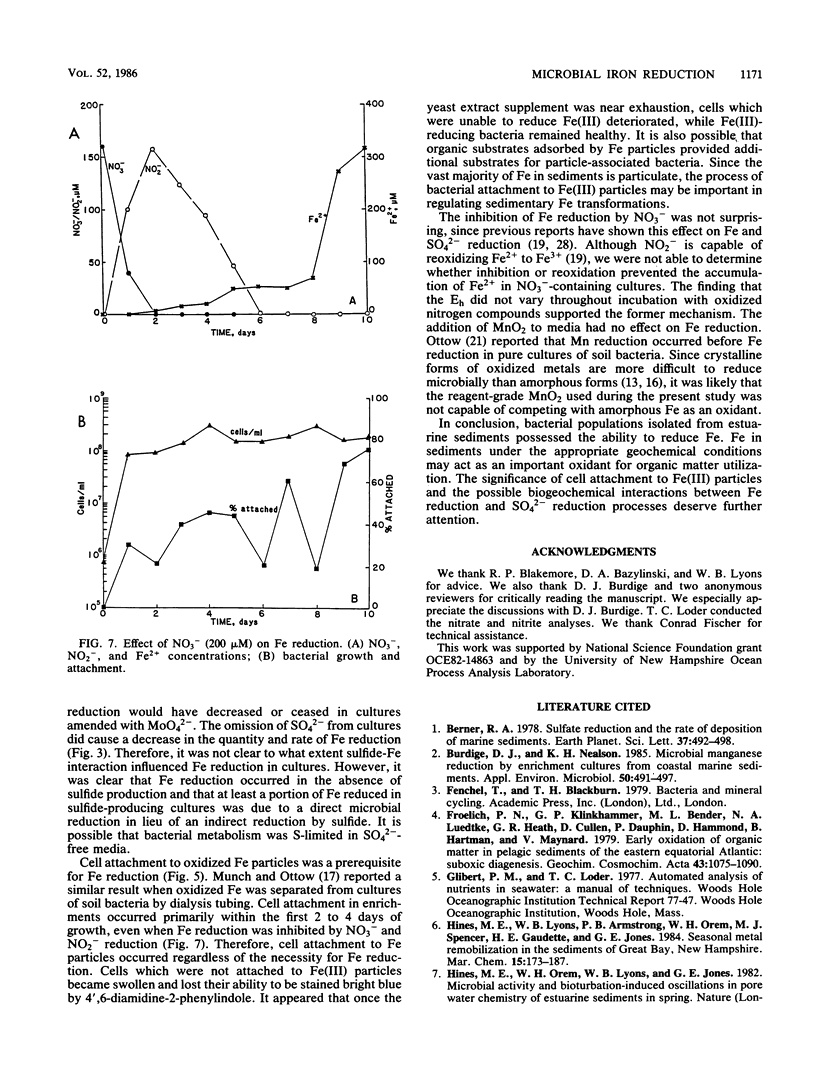

Selected References
These references are in PubMed. This may not be the complete list of references from this article.
- Burdige D. J., Nealson K. H. Microbial manganese reduction by enrichment cultures from coastal marine sediments. Appl Environ Microbiol. 1985 Aug;50(2):491–497. doi: 10.1128/aem.50.2.491-497.1985. [DOI] [PMC free article] [PubMed] [Google Scholar]
- Lovley D. R., Phillips E. J. Organic matter mineralization with reduction of ferric iron in anaerobic sediments. Appl Environ Microbiol. 1986 Apr;51(4):683–689. doi: 10.1128/aem.51.4.683-689.1986. [DOI] [PMC free article] [PubMed] [Google Scholar]
- Martens C. S., Berner R. A. Methane production in the interstitial waters of sulfate-depleted marine sediments. Science. 1974 Sep 27;185(4157):1167–1169. doi: 10.1126/science.185.4157.1167. [DOI] [PubMed] [Google Scholar]
- Obuekwe C. O., Westlake D. W., Cook F. D. Effect of nitrate on reduction of ferric iron by a bacterium isolated from crude oil. Can J Microbiol. 1981 Jul;27(7):692–697. doi: 10.1139/m81-107. [DOI] [PubMed] [Google Scholar]
- Ottow J. C. Selection, characterization and iron-reducing capacity of nitrate reductaseless (nit-) mutants of iron-reducing bacteria. Z Allg Mikrobiol. 1970;10(1):55–62. [PubMed] [Google Scholar]
- Sansone F. J., Martens C. S. Methane production from acetate and associated methane fluxes from anoxic coastal sediments. Science. 1981 Feb 13;211(4483):707–709. doi: 10.1126/science.211.4483.707. [DOI] [PubMed] [Google Scholar]
- Smith R. L., Klug M. J. Electron donors utilized by sulfate-reducing bacteria in eutrophic lake sediments. Appl Environ Microbiol. 1981 Jul;42(1):116–121. doi: 10.1128/aem.42.1.116-121.1981. [DOI] [PMC free article] [PubMed] [Google Scholar]
- Sørensen J. Denitrification rates in a marine sediment as measured by the acetylene inhibition technique. Appl Environ Microbiol. 1978 Jul;36(1):139–143. doi: 10.1128/aem.36.1.139-143.1978. [DOI] [PMC free article] [PubMed] [Google Scholar]
- Sørensen J. Reduction of ferric iron in anaerobic, marine sediment and interaction with reduction of nitrate and sulfate. Appl Environ Microbiol. 1982 Feb;43(2):319–324. doi: 10.1128/aem.43.2.319-324.1982. [DOI] [PMC free article] [PubMed] [Google Scholar]


